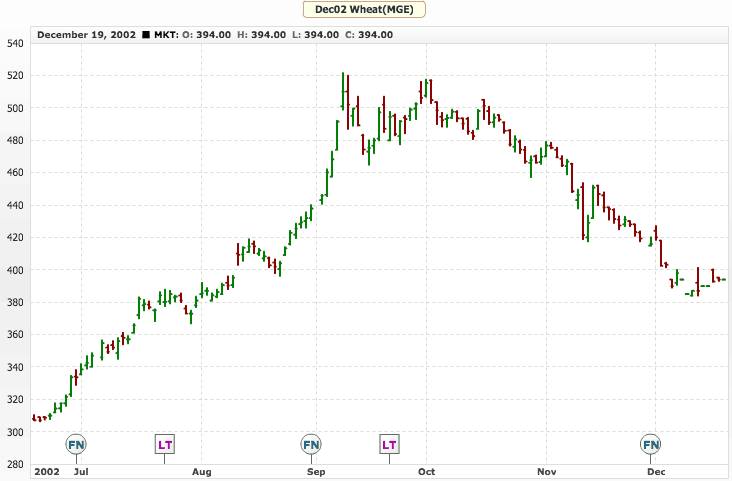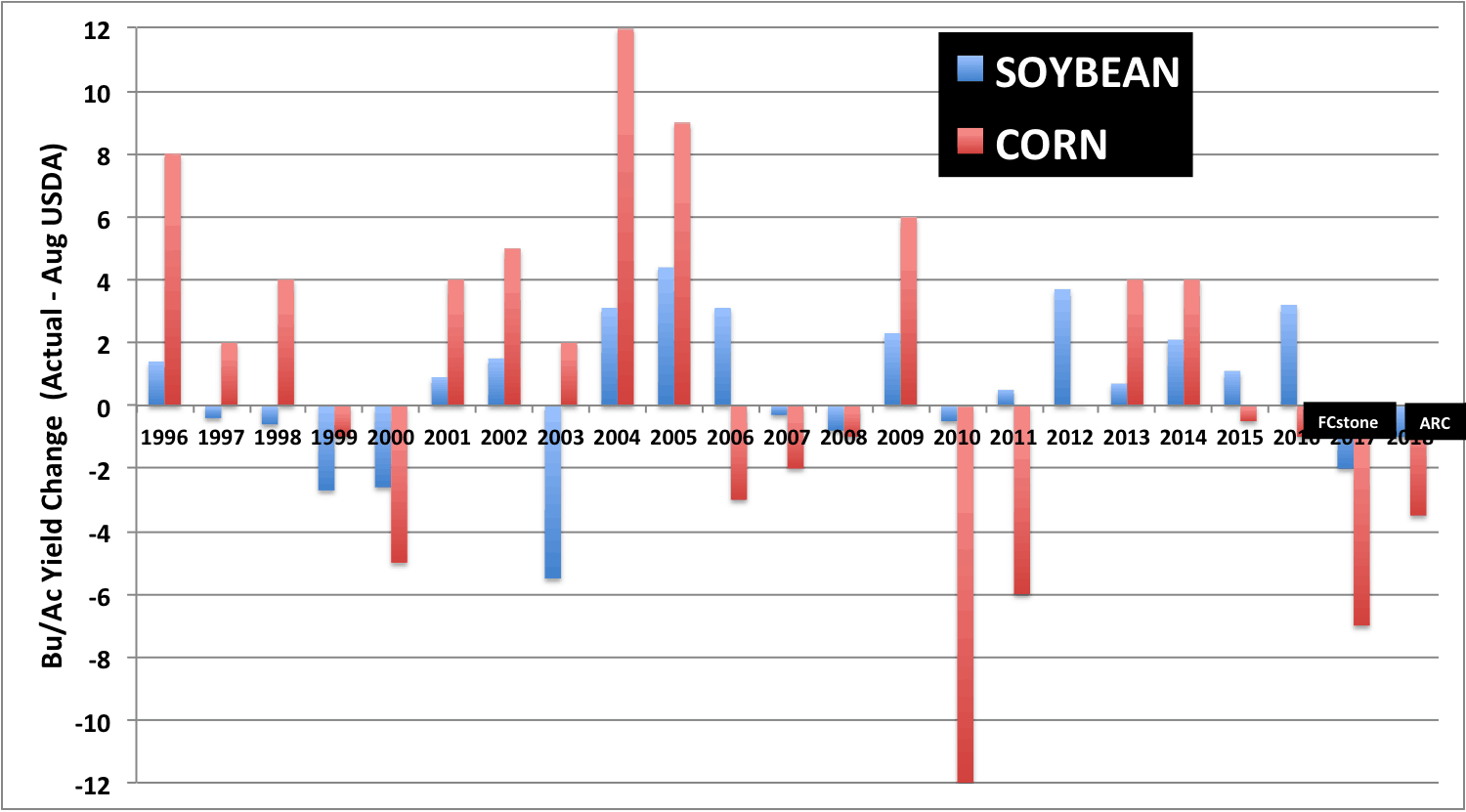USDA Corn and Soybean Yields
The USDA report last Friday shocked the grain market, with many analysts skeptical of the yield forecasts for corn and soybeans. The soybean estimate went up to 49.4 bu/ac, from 48 in July. Corn yield dropped only slightly, from 170.7 to 169.5 bu/ac. These differ sharply from market expectations ranging 162-168 bu/ac for corn and 47.7-49 bu/ac for soybeans. The reason for this is the poor conditions at times in the western corn belt. If the dry, hot conditions have damaged the crops, a harvest rally may ensue for corn and production would be lower. The graph below shows the difference between the USDA August estimate and final years.
Soybeans More Resilient than Corn?
A major, persistent heat wave did not occur this summer, leading to dry spots in the grain belt being the main concern. Soybeans usually fare better in these conditions than corn. Soybeans have deeper roots that provide greater moisture during rainfall deficits. Additionally, soybeans can abort flower flushes and produce more later. The corn and soybean conditions (percent Good/Excellent) for this year are shown below, with comparisons to last year (in parenthesis).
CORN IA 64% (83%) IL 58% (83%), IN 52% (73%), MN 80 (85%), and NE 59% (76%)
SOYBEANS IA 59% (82%), IL 64% (79%), IN 54% (74%), MN 74% (80%), and NE 58% (77%)
These values are similar between soybeans and corn besides IL, where the percent good/excellent of corn dropped off significantly. We’ll see around harvest time whether soybeans fared better than corn.
Spring Wheat
Spring wheat prices have collapsed even though a drought in Canada and the northern Plains is occurring. The 2002 (last time we had a similar spring wheat drought) price chart of MSP wheat is shown below.
The drought is as bad or worse than 2002. However, the supply/demand situation is not as scary for spring wheat; and, back then, prices did not get above $6. Large Russian harvest expectations are limiting any global deficits. USDA lifted the Russia Winter/Spring wheat crop by a huge 5.5 million tonnes. This is the biggest single month increase in their production in history.













